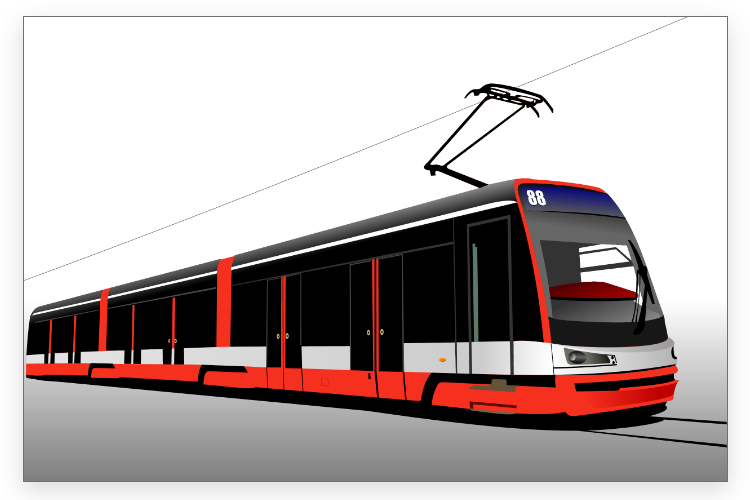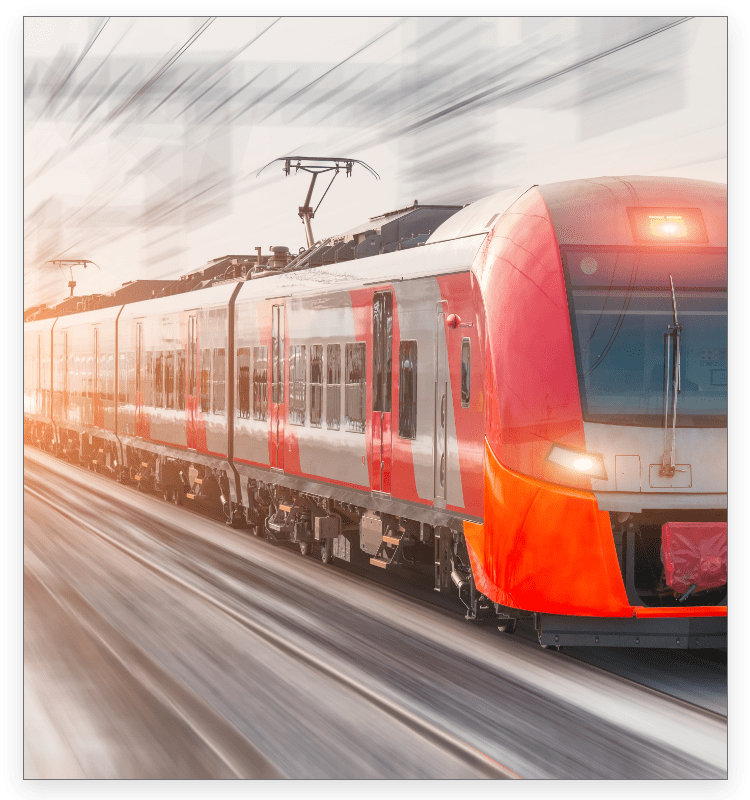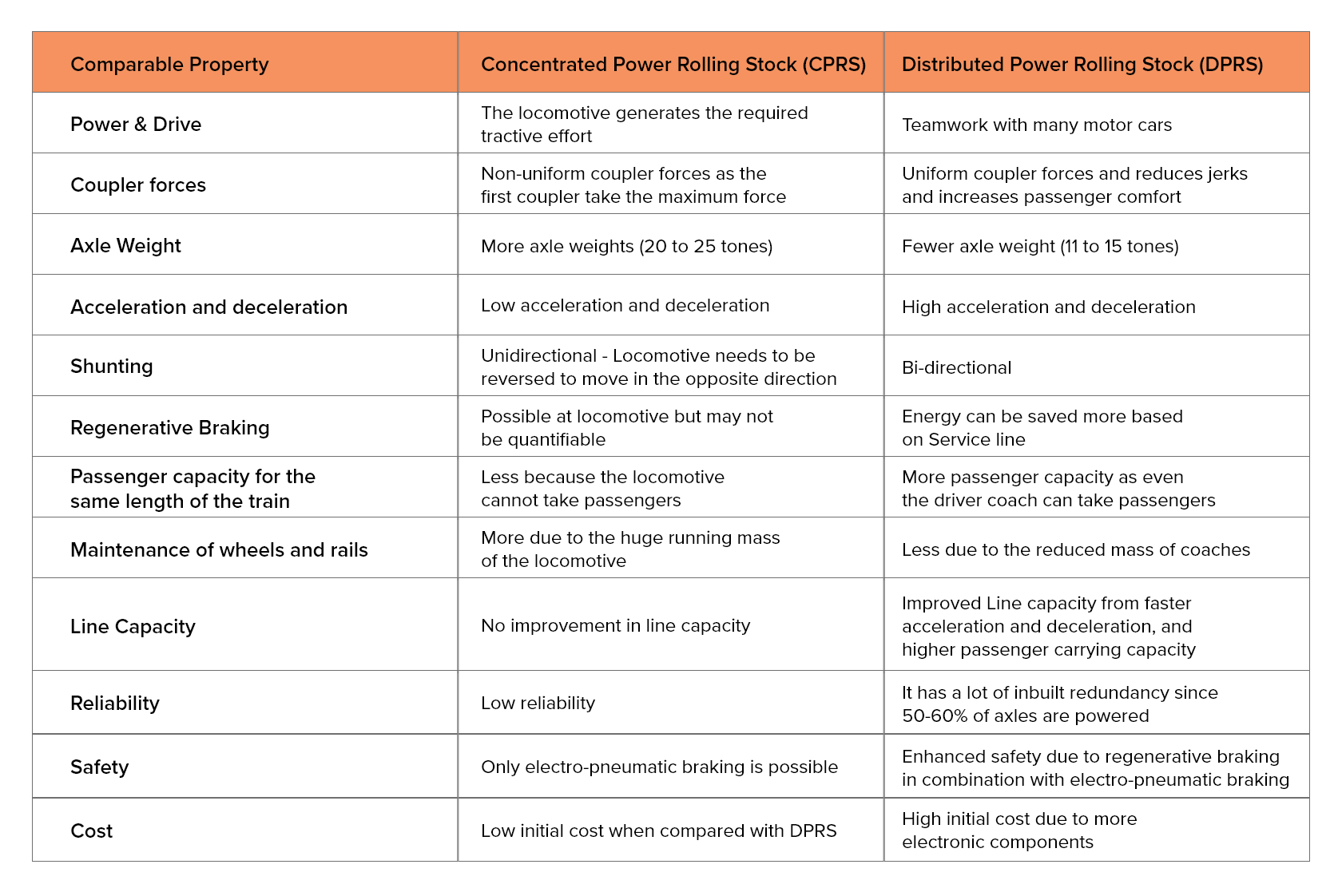Railway transport is one of the preferred and most reliable means of transportation for millions worldwide. With the advent of new technological developments in the industry and the growing demand for high-speed, long-distance trains capable of running at 300 kmph and beyond have recently gained prominence. The operation of high-speed trains linking major cities are regarded as an indirect source of economic growth and urbanization sustenance.
Railway operators are looking for optimized design solutions for rolling stock to improve performance and efficiency and reduce operational costs and downtime. They are focused on the optimum utilization of rolling stock and quick return on investments. Design requirements of rolling stock also include reducing the maintenance cost of rail infrastructure, using an effective braking system, transmitting more passengers with the exact train dimensions, handling super dense crush loads, and more.
Tractive systems play a significant role in railway transport and are classified into non-electrical and electrical traction systems. The remainder of this paper will focus on the electrical traction system used in passenger transport and elaborates on the design requirements that are addressed with the help of distributed power rolling stock.

The evolution of distributed power rolling stock, or multiple unit train, was started in 1893 by Liverpool Overhead Railway. But the actual development of distributed power rolling stock happened in 1897 when a multiple-unit traction control system developed by Frank Sprague was used in South Side elevated Railroad System in Chicago. Multiple units were first implemented in commuter trains, such as EMUs (Electrical Multiple Units), used for urban transportation, and MEMUs (Main Line Electrical Multiple Units), used for sub-urban transport. Multiple units are now extensively used in High-Speed Rail (HSR) and Semi High-Speed Rail (SHSR) because it meets all HSR requirements as per UIC (International Union of Railways) standards.
In distributed power rolling stock, the tractive effort to pull the entire train is distributed to multiple units, i.e., to more than one Motor Car or Coach. One Multiple Unit is referred to as a basic unit or a Trainset with fixed Composition, and basic units are selected in such a way that one driver car each is placed at both ends of the train. The traction power distribution is measured in terms of the percentage of powering or motoring. For example, in a train with 16 Cars with 64 axles, having 32 powered axles will have 50% powering and motoring. More powered axles will aid in quicker acceleration and deceleration, a must-have requirement of modern urban transport systems. Lightweight axles are essential when rolling stock is designed for higher speeds. Since all the traction equipment is distributed in different cars or coaches, the multiple-unit train arrangement helps manufacturers to maintain uniform weight across the cars or coaches. In addition, distributed power rolling stock will have more uniform coupler forces between coaches, which minimizes the sudden jerks of cars, enhancing passenger comfort.

The selection of a tractive system for distributed rolling stock also depends on the type of service lines where trains intend to run, such as urban, suburban, and mainline, for which multiple units are designed. It considers super dense crush loads or more axle loads for urban systems, as well as the 'speed vs. time' cycle at two different points or stations and intern across the route. This helps design a better traction duty cycle for different service lines for different routes. The multiple-unit system provides flexibility in designing a tractive system for designing for velocity or tractive effort. Based on the need, the gear ratio can also be maintained to get the optimum designed output.
Modern traction control systems ensure that available power from the traction motor is utilized thoroughly. These systems are inbuilt with a wheel slip control system. Distributed power rolling stock is equipped with a regenerative braking system with the help of 3-phase induction motors. The 3-phase motor acts as a generator and produces electricity from the kinetic energy of moving train wheels while braking. Regenerative braking is possible only for motorized cars or coaches and is non-frictional braking – this helps reduce the wear and tear of wheel and rail and increase the life of wheel and rail.
However, the only disadvantage of distributed power rolling stocks is their initial cost because of more electronic components and associated maintenance. Its cost is approximately 40% more than the cost of concentrated power rolling stock. Trainsets with distributed traction equipment or multiple units are currently prevalent in countries like Japan, China, Italy, Germany, and India (Ex: Japan's Shinkansen, China's CRH trainsets, Siemens' ICE3, Velaro trainsets, and India's Vande Bharat express, and more)

Concentrated power rolling stock has lower manufacturing and maintenance costs due to less electronic equipment per train. It has fewer vibrations and noise in passenger cars because no motors or gearbox is attached under the bogies. These systems or locomotives have good adhesive mass because of their massive weight.
Distributed power rolling stock or multiple units have fixed composition, are bi-directional and are self-propelled. They are airtight structures that minimize air drag. They use a high level of technology, power electronics, and a complementary braking system. They have a high level of RAMS because of inbuilt redundancy and better ride index. Multiple units are used in HSR (High-Speed Rail) and SHSR (Semi High-Speed Rail) because of significantly increased business activity and productivity.
At Quest Global, hundreds of engineers support various traction systems activities. Our expert engineers have extensive experience in the rail domain coupled with comprehensive knowledge of concentrated power rolling stock and distributed power rolling stock systems. From the design and development of traction systems, sub-systems, and components, verification of design, to vehicle-level testing of train control management systems – we have been solving the hardest rail engineering challenges for the largest Rail OEMs across the world.
References

